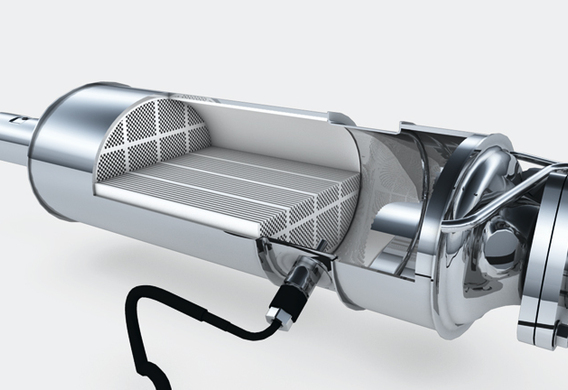
The introduction of the Euro-4 standard for toxic substances is the result of the introduction of the particulate filter by most modern machines. It is clear from the name that the filter is designed to neutralize the soot-the product of combustion of diesel fuel. The two main types are DPF (s) and FAP (Closed filters with Regeneration function).
The particulate filter shall be cylindrical. Inside the body are cells resistant to high temperatures and designed to delay the particles of soot. The engine control block shall control the filter capacity of the filter and, if necessary, regenerate, the treatment of the soot. During the high load of the car, when the temperature in the filter is above 350 degrees, the passive regeneration mode is started. In case of urban or short distance traffic, active regeneration shall be activated when the filter is filled.
Most often, this device is found in the exhaust system of diesel-fuelled vehicles, because this type of unit is more likely to be soot to the formation of soot. In a number of European countries, the use of a particulate filter in a diesel engine exhaust system is prescribed by law.
Causes of increased soot content and effects
If there are problems with the oxygen sensor, temperature sensor or pressure sensor, the regeneration of the filter will not be possible. In such cases, the emergency mode of the engine shall normally be started. Numerous unsuccessful attempts to regenerate result in a part of the unburned fuel in the engine oil, provoking a reduction in its viscosity. As a result, protective and lubricating oil properties are deteriorating, and this often causes a breakdown of the engine.
The incorrect work of the particulate trap may trigger the failure of the EGR valve. The opposite is possible: a valve may cause a beige filter problem.
Characteristics of his malfunctioning on diesel are as follows:
- Exhaust gas opacity;
- Reduction of motor traction;
- Improved engine oil level;
- Increased fuel consumption;
- Appearance of uncharacteristic noise of the engine of noise;
- Warning signal on the instrument panel.
In order to avoid undesirable consequences, it is recommended to diagnose the car in a timely and timely time.
Replacement of the particulate filter and positive effect on engine operation
The length of the particulate filter service is between 20 and 120 thousand kilometers. Given the relatively high cost of this spare part, the service interval is large enough, but sooner or later, even if the engine is in good condition, it needs to be changed. As a rule, after being replaced, there are:
- Ration of propulsion of the engine;
- Reduction of fuel consumption;
- No need for use of special motor oils or regenerators;
- Small cost compared to the purchase of a new spare part.







